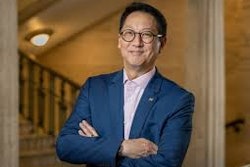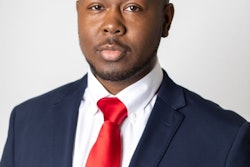Tuskegee’s Time
125th anniversary puts spotlight on the university’s renewed vision.
By Ronald Roach
Tuskegee, Ala.
From its earliest years, Tuskegee University, known initially as Tuskegee Institute, navigated the higher education landscape with considerable skill. Shifting after its 1881 founding from a state-controlled teachers’ institute to an independent, state-related college by the 1890s,
Tuskegee qualified as one of the 18 historically Black schools named as an “1890” federal land-grant institution. It became the only private Black school to benefit from the 1890 land-grant status, which made it eligible for federal funding. From the 1890s through the early years of the 20th century, the repositioned Tuskegee prospered, as its famous founder, Booker T. Washington, proved successful at securing financial support from northern industrialists and other philanthropists.
“The genius of Washington was that he changed Tuskegee’s relationship with the state of Alabama such that [the school] developed without undue restrictions … He did it very carefully.
He did not reject the state affiliation,” explains Dr. Benjamin F. Payton, Tuskegee’s current president. “Tuskegee is a very fortunate institution in part because of the quality of the leadership that established it.”
In 2006, Tuskegee officials, faculty, students, and alumni celebrated the school’s 125th anniversary, marking accomplishments that include the school’s aggressive effort to expand science and engineering research and to produce African-American doctorates from its relatively new Ph.D. programs. Tuskegee is now seen as a modest-sized but effective producer of Black graduates in business, engineering and the sciences, an outcome consistent with the pragmatic vision Washington espoused for African-American advancement.
The past quarter century during which Payton has served as the school’s president saw Tuskegee develop two science and engineering Ph.D. programs, establish an aerospace engineering department and become the site for a federally sponsored National Center for Bioethics in Research and Health Care.
No longer an institute, the school attained university status in 1985. And more recently, Tuskegee has renegotiated its relationship with the Alabama state government to gain state funding increases at a level considered to more equitably reflect its state-related status. Annual state funding had fallen to a low of $2.5 million in 2004, but has increased to $10 million after Tuskegee’s rapprochement with Alabama officials, according to Payton.
Tuskegee’s focus on science and engineering education generated national news in April when U.S. President George W. Bush visited the campus and gave a speech on the American Competitiveness Initiative. The Bush administration’s initiative has increased federal investment in research to ensure that the United States remains the world leader in scientific and engineering innovation.
Tuskegee officials say Bush’s visit offered a timely endorsement of the school’s recent efforts to meet national priorities while staying focused on providing opportunities for African-American students.
“It was important to have the President make use of Tuskegee [for promoting] the new national initiative for American competitiveness,” Payton says.
“We’ve had more than a name change,” he notes. “We began to place more emphasis on research and graduate education.”
Dr. Shaik Jeelani, Tuskegee’s vice president for research and sponsored programs, contends that the increased research activity by faculty that has coincided with the introduction of the new graduate programs is having a positive impact on undergraduates. From 1996 to 2005, Tuskegee’s graduation rate increased from 44 percent to 48 percent, a rate that puts Tuskegee in the top 10 among historically Black schools, but well below the most competitive predominantly White colleges and universities. By not seeking aggressive undergraduate enrollment growth, Tuskegee has been vulnerable to gradual enrollment declines during the Payton years, a development that has caused concern among some alumni. However, Tuskegee has recently earned recognition as a top undergraduate institution by U.S. News & World Report and Black Enterprise magazines.
“We’ve tried to make sure the research is tied to the undergraduate education program,” Jeelani says.
Historic Dimensions
A tour of historic Tuskegee University reveals an expansive and beautifully landscaped school whose main campus includes 161 buildings spread over 268 acres. With an undergraduate and graduate student population of roughly 3,000 students, down from 3,736 in 1980 just prior to Payton’s presidency, the campus appears roomy and well-designed for the relatively modest-sized academic community that studies and works there. The campus, which has many elegant brick buildings built in the early part of the 20th century, enjoys national historic site designation and is home to the Carver Museum, maintained by the U.S. National Park Service. Total campus property, including forests and university farmland, occupies more than 5,000 acres.
The well-maintained campus contrasts sharply with the depressed conditions of the town of Tuskegee and the impoverished Macon County, where the southeastern Alabama town of nearly 12,000 serves as the county seat. “But outside the Tuskegee oasis, the world was grim,” is how writer V.S. Naipaul described the contrast between the university and its surrounding community in his 1990 book A Turn in The South. In 2002, the per capita personal income in Macon County was $16,728, just 54 percent of the national per capita income of $30,906, according to the U.S. Census.
*
The Tuskegee community “spans the whole spectrum. This is the site where people can begin their liberation. This is a site where they can escape. It’s America in microcosm,” says University of Alabama law professor Alfred Brophy, referring to both the university and the town of Tuskegee.
“Among some of the university’s unique historic contributions are the creation of the nation’s first agricultural extension agent program; the land donation by the school that allowed for the construction of the Tuskegee Veterans Administration Hospital, the first to be staffed by Black professionals; the establishment of the School of Veterinary Medicine, the only one at a historically Black institution; and the recruitment by former president Frederick Patterson of the Tuskegee Airmen flight training program to the institute, which produced all-Black
squadrons of highly decorated World War II combat pilots.
Early recognition in the sciences came to the Alabama school largely because of the pioneering work of legendary scientist Dr. George Washington Carver. By 1910, Carver’s numerous discoveries in sweet potato and peanut product development had sparked a revolution in southern agriculture. The [nation] owes a great deal to Tuskegee University,” says Brophy, a noted civil rights activist in Alabama.
Charting a New Course
Noted economist Dr. Andrew F. Brimmer, the chair of Tuskegee’s board of trustees, says that prior to the 1970s the institute had been largely well-served by its past presidents, all of whom except Washington had risen up from the school’s administrative ranks. By the late 1970s, Brimmer, who had joined the Tuskegee board in 1966, believed it was time to bring an outsider into the presidency. Charged to lead the search for a successor to then-president Luther Foster in 1981, Brimmer wanted an individual with broad national experience capable of leading the institute to university status, he says.
“It was time to break the mold of internal succession. Tuskegee needed to be less insular … I felt it needed a leader that would give the school that extra push,” says Brimmer.
Brimmer urged Payton, who was a Ford Foundation program officer at the time, to seek the presidency. Payton, a native of South Carolina and a graduate of historically Black South Carolina State University, had previously served as president of Benedict College in Columbia, S.C. After Payton’s hiring, Brimmer recalls that not all of the changes sought by the new president found favor among those in the Tuskegee community. The decision in the 1980s to close the John Andrew Memorial Hospital, a campus-based hospital that had long served local Blacks and had provided training for Black health professionals, proved unpopular among Tuskegee alumni and Macon County residents, according to Brimmer.
Although the facility served as a public hospital for Macon County, the “university was subsidizing the hospital at about $1 million a year,” Brimmer recalls. “[Payton and I] agreed the hospital had to be closed. That raised a big issue with the board, many of whom were local and supported the old regime. The board was split, but in the end we voted to close the hospital.”
The effort to add Tuskegee alumni to the 25-member trustee board has resulted in a number of short-lived appointments since the 1980s due to clashes with Brimmer and his board allies. With the state controlling six board positions, Brimmer confirms that the task of recruiting highly qualified individuals to the trustee board has not been an easy one since he became the trustee chairman in 1982. Tuskegee alumni currently serving as trustees, include Atlanta construction magnate Herman J. Russell; Atlanta investment banker Felker Ward; and retired U.S. Army Gen. Charles E. Williams, now a U.S. State Department official.
“The board needs individuals who can make major contributions, and that’s not just cash. They must be able to contribute to university advancement in some way,” Brimmer says.
Not unlike Tuskegee’s early years, when Washington’s connections to the politically powerful and wealthy helped put the school on a solid footing, the school under Brimmer’s watch has benefited from strong ties to corporate America, and Republican and Democratic presidential administrations. Corporate and federal government support has proven instrumental to the school’s increased research activity and graduate program development.
The push to expand the school’s science and engineering education and research programs found a ready cadre of research-minded faculty and administrators who had extensive experience working in interdisciplinary teams. Dr. Walter A. Hill, the dean of the College of Agricultural, Environmental and Natural Sciences, says that dating back to the 1970s several faculty members in agriculture and the natural sciences had shared an interest in sweet potato cultivation and product development. That interest, coupled with Tuskegee’s long-time commitment to improving opportunities for small farmers, propelled a research group, including Hill, to compete in a NASA-funded program allowing them to become the first scientists ever to cultivate sweet potato plants without soil. In addition to the sweet potato innovation, Tuskegee faculty members have led efforts in producing the peanut genome map, according to school officials.
“What we’re doing is a continuation of Dr. Carver’s work that includes the science and outreach. The NASA support has allowed us to do the cutting-edge work in developing food systems for space travel. But we’ve also been interested in making the research relevant for the small farmers down here,” Hill says.
Jeelani says that the past decade has seen considerable growth in research conducted by Tuskegee faculty, a development coinciding with the launch of the Ph.D. program in materials science and engineering in 1998 and the Ph.D. program in integrative biosciences in 2006. Annual sponsored research by faculty has increased from $23 million in 1996 to $48 million in 2006, according to Jeelani.
“Forty-eight million dollars spread over 250 faculty turns out to be pretty significant,” Jeelani says.
Currently serving as the director of the Tuskegee Center for Advanced Materials, Jeelani helped establish the materials science and engineering program, which is the first accredited Ph.D. program of its kind based at a historically Black institution. Millions of dollars have been pumped into the center and its programs, including a $9.4 million grant from the U.S. Army Research Office.
“Through T-CAM, we’re studying technological advances that would better utilize nanoparticles and tubes to enhance structural designs for planes, submarines and Army tanks. We’re also looking at ways to make things like boats and sporting goods out of lighter, stronger materials at low cost,” Jeelani notes.
Virgin Islands native Merlin Theodore, a third-year Ph.D. candidate in the materials science and engineering program, specializes in nanotechnology and expresses confidence that she will be able to pursue a career that will allow her to teach in the materials science field as well as work in private industry. One of her goals is to establish a materials science department at the University of the Virgin Islands.
“The opportunities are plentiful in nanotechnology,” she says.
Cathy Fore, director of HBCU/MEI partnerships at the Oak Ridge National Laboratory in Tennessee, says, “Tuskegee is right on target in meeting a national need. In the drive to train people in the STEM disciplines, materials science is at the top of the list.”
Since 2003, Tuskegee has awarded 7 doctorates to students in materials science and engineering. The Ph.D. program “positions them to compete on a global scale,” according to Fore. “Government agencies and private industry are looking for high-quality candidates to employ in materials science. They’re promised a job even before they graduate,” Fore adds.
Biosciences Breakthrough
Based in Tuskegee’s College of Agricultural, Environmental and Natural Sciences, the integrative biosciences Ph.D. program accepted its inaugural class this past fall. Dr. Luther Williams, the Tuskegee provost and a former director of the National Science Foundation, initially came out of retirement to direct the new program and to teach first-year core courses. In June, however, Williams was appointed the university provost and vice president for academic affairs following the passing of Dr. William Lester, the previous provost.
Williams says the opportunity to lead a graduate program that’s brand new and expected to produce a significant stream of Black graduates in a new field has energized him. Integrative biosciences represents what scientists believe will become an important interdisciplinary field.
“Science has evolved to the point where the most challenging problems don’t lend themselves to any single disciplinary approach … To do something on the order of mapping the genome, one has to integrate knowledge from several fields,” Williams explains.
“There will be a tremendous need for professors who have been trained in this mode. The idea is to train and annually graduate six or seven students, many of whom will be African-American, so that they go on to other institutions. That’s an extraordinarily powerful contribution for Tuskegee to make,” Williams says.
© Copyright 2005 by DiverseEducation.com


















